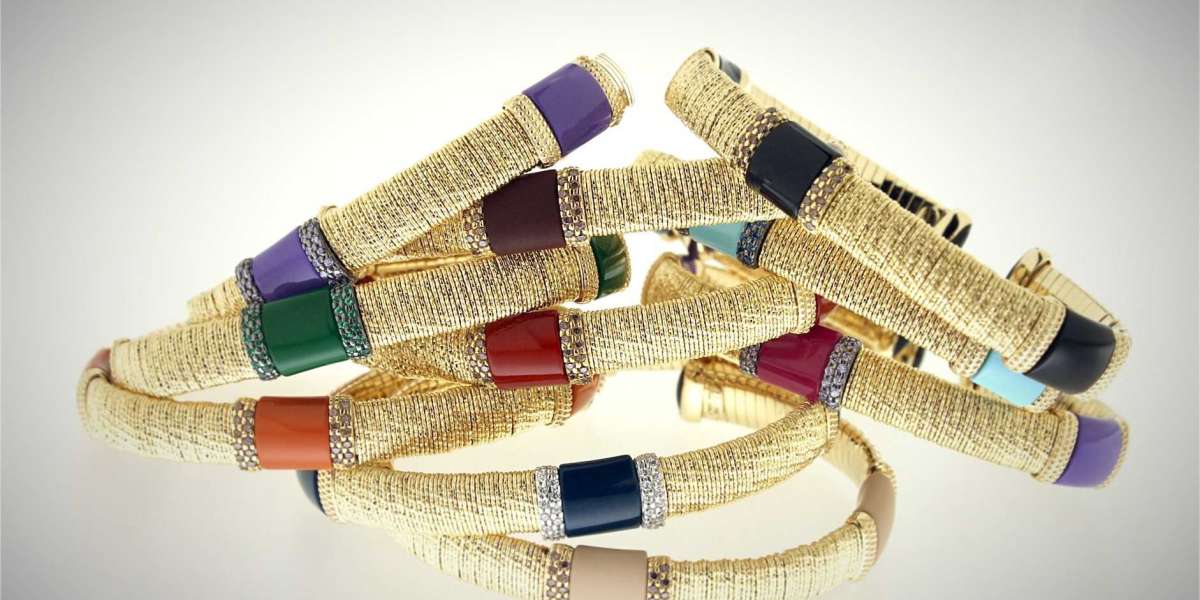The wholesale jewelry business is highly competitive, fast-paced, and increasingly digital. To keep up with customer expectations and global demand, wholesale jewelry sellers must integrate smart technologies and tools into their operations. From inventory management to customer engagement, digital transformation is not just an option—it’s essential. In this blog, with insights from Goldy, a trusted leader in Dubai’s wholesale jewelry scene, we’ll break down the key digital tools that every seller should consider adopting to thrive in this modern marketplace.
Understanding the Digital Shift in Wholesale Jewelry
Why Digitalization Matters in Wholesale Jewelry
The rise of online platforms, e-commerce, and real-time trading has transformed how the wholesale jewelry industry operates. Buyers now expect instant updates, digital catalogs, seamless transactions, and fast deliveries. Digital tools enable sellers to:
Reduce manual errors
Increase productivity
Provide better customer service
Make data-driven decisions
Compete globally
Goldy, known for adapting cutting-edge solutions, highlights the importance of integrating tech to manage operations with speed, accuracy, and transparency.
Must-Have Digital Tools for Wholesale Jewelry Sellers
1. Inventory Management Systems
An efficient inventory system allows real-time tracking of stock, helping sellers know exactly what’s available and what’s not.
Recommended Tools:
TradeGecko (now QuickBooks Commerce) – Tailored for B2B sellers, it allows tracking of multi-channel inventory, pricing, and orders.
Zoho Inventory – Excellent for jewelry businesses with its automation, barcode scanning, and multi-location tracking.
Goldy’s Insight:
“Our inventory system is cloud-based and integrated with our e-commerce platform, which minimizes stockouts and overselling issues.”
2. Digital Catalog Virtual Showrooms
Modern buyers prefer browsing collections online before making a purchase. A high-quality digital catalog or virtual showroom helps bridge the gap.
Recommended Tools:
Canva Pro – Create professional catalogs with ease.
Matterport or ARitize – For 3D virtual jewelry showrooms.
Goldy’s Tip:
“We invested in virtual showrooms during the pandemic and continue to see great ROI from global buyers.”
3. Customer Relationship Management (CRM) Tools
Strong customer relationships are critical for repeat business in wholesale jewelry. CRMs allow personalized follow-ups, quote tracking, and feedback collection.
Recommended Tools:
HubSpot CRM – Free and scalable for managing leads and existing clients.
Salesforce – Advanced automation and analytics for larger operations.
4. Secure Payment Gateways Invoicing Platforms
Speed and security in financial transactions are crucial for high-value items like jewelry.
Recommended Tools:
Payoneer or Stripe – International payments with good security.
Xero or QuickBooks – For digital invoicing, expense tracking, and multi-currency support.
Goldy’s Practice:
“Our payment system integrates directly with our CRM and inventory—this helps process bulk orders quickly and securely.”
5. Website E-Commerce Integration
Your digital storefront should be optimized for both wholesale clients and B2B buyers. A mobile-friendly, SEO-optimized site is key.
Recommended Platforms:
Shopify (B2B version) – With multi-tier pricing, custom accounts, and order management.
Magento – Highly customizable for jewelry wholesalers with complex product catalogs.
6. Social Media Email Marketing Automation
To stay top-of-mind, sellers must maintain an active digital presence. Automated tools help save time and improve targeting.
Recommended Tools:
Mailchimp or Klaviyo – For automated newsletters, order updates, and promotions.
Later or Hootsuite – To schedule and manage Instagram, Pinterest, and Facebook posts.
Goldy’s Strategy:
“Our Instagram strategy focuses on showcasing high-end collections with pricing accessible via DMs or email opt-ins.”
7. Analytics Reporting Tools
Understanding customer behavior, best-sellers, seasonal trends, and marketing ROI is vital.
Recommended Tools:
Google Analytics 4 – For tracking website traffic and buyer behavior.
Power BI or Tableau – For deeper data visualization and business intelligence.
Benefits of Going Digital in Wholesale Jewelry
Improved Operational Efficiency
Manual spreadsheets and handwritten orders are prone to errors. Digital tools automate repetitive tasks, saving time and reducing mistakes.
Enhanced Global Reach
Digital platforms open up markets in Europe, Asia, and beyond. Even a small Dubai-based wholesale jewelry seller can sell to clients in Canada or Singapore.
Increased Trust and Transparency
Clear, real-time information on pricing, availability, and order tracking builds client trust—critical in the high-value jewelry market.
Scalability
Whether you're managing five accounts or five hundred, digital systems help you scale without losing quality or accuracy.
Future Trends: What’s Next for Digital Wholesale Jewelry Sales
AI-Powered Recommendations – Personalized collections for clients based on past orders.
Blockchain for Supply Chain Transparency – Tracking origin, authenticity, and ethical sourcing.
Augmented Reality (AR) – Letting buyers “try on” pieces digitally before committing to large bulk orders.
Goldy, always ahead of the curve, is already piloting blockchain solutions to enhance transparency and ethical sourcing confidence.
Conclusion: Invest in the Right Tools with Goldy’s Guidance
In today’s rapidly changing market, success in the wholesale jewelry space depends on how well you leverage digital tools. From virtual catalogs to integrated inventory systems and CRM platforms, digitalization enhances efficiency, credibility, and sales growth.
As a market leader in wholesale jewelry, Goldy serves as a prime example of how digital innovation can help sellers thrive in the Dubai jewelry trade and beyond. Whether you're just starting out or managing an established operation, the right tools can make all the difference.














